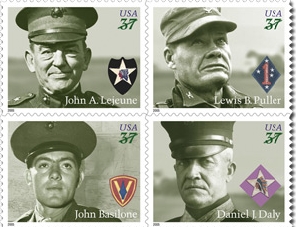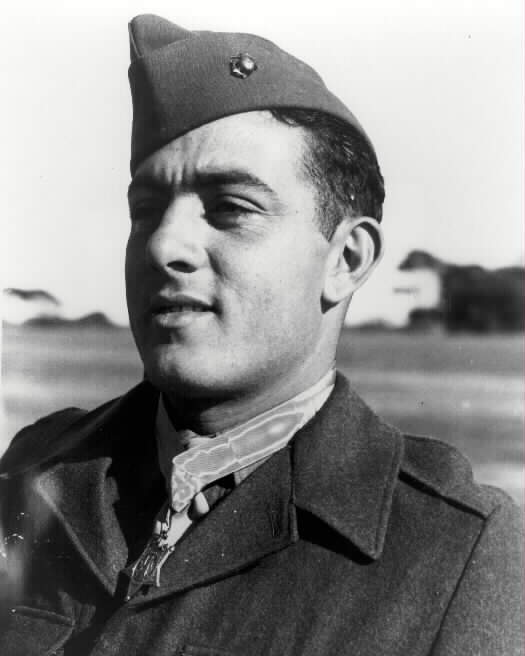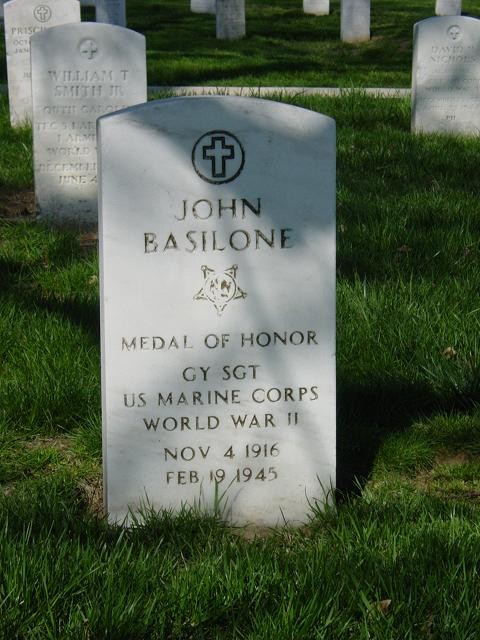Distinguished Marines (4):
The achievements of John Basilone, Daniel J. Daly, John A. Lejeune and Lewis B. Puller—four legendary Marines who served with bravery and distinction during the 20th century—will be immortalized on postage stamps next year:
• The John Basilone stamp features a detail of a 1943 photograph of Basilone and the insignia of the 5th Marine
Division. Basilone served and died with the 1st Battalion, 27th Marine Regiment, 5th Marine Division during the
invasion of Iwo Jima in February 1945.
• The Daniel J. Daly stamp features a detail from a circa 1919 photograph of Daly and the insignia of the 73rd
Machine Gun Company, which is a variation on the Army’s 2nd Infantry Division insignia. During World War I,
Daly served as a Marine with the 73rd Machine Gun Company in the 2nd Infantry Division.
• The John A. Lejeune stamp features a detail from a circa 1924 photograph of Lejeune. The stamp also depicts the
insignia of the Army’s 2nd Infantry Division, which Lejeune commanded during World War I.
• The Lewis B. Puller stamp features a photograph of Puller at Koto-ri, Korea, in 1950, and the insignia of the 1st
Marine Division. Puller was a battalion commander and regimental commander with the 1st Marine Division
during World War II and the Korean War.
Stamp still barred for ‘Manila John’
Courtesy of the Washington Times
March 10, 2002
An appeal to Congress and more than 150,000 signatures have failed to persuade an advisory panel to support a postage stamp honoring a heroic Marine sergeant who died at Iwo Jima after taking out an enemy installation.
Gunnery Sergeant “Manila John” Basilone was the only enlisted Marine in World War II to receive the Purple Heart, the Navy Cross and the Medal of Honor.
“John Basilone was a hero in the truest sense of the word,” said Representative Bill Pascrell Jr., New Jersey Democrat, who convinced 29 other House members to introduce a bill pressuring the Citizens’ Stamp Advisory Committee to recommend a stamp with Sergeant Basilone’s picture on it.
“I can’t believe that in this climate of patriotism, we can’t even get recognition,” said Jordan A. Jaffee, a member of the John Basilone Detachment of the Marine Corps League.
So, 57 years after the Italian-American Marine was killed on Iwo Jima, a silent vigil was held in Marine Corps League detachments and in American Legion and Veterans of Foreign Wars halls across the nation. Flags were lowered to half-mast in Quantico, Virginia, Brunswick, Ohio, and New Jersey.
On the evening of Februry 19, U.S. Representatives, Senators, Rolling Thunder members, the Prince William County Board of Supervisors and Marine Generals and Commandants attended a ceremony at American Legion Post 139 in Arlington to honor the memory of Sergeant Basilone.
John Basilone was born in 1916 in Buffalo, New York, one of 10 children of Salvatore and Dora Basilone. Reared and educated in Raritan, New Jersey, he gained local attention as a light-heavyweight boxer. He enlisted in the Army when he was 18 and served in the Philippines, where he picked up the nickname “Manila John.” He was honorably discharged in 1937, but, anticipating World War II, he enlisted in the Marines in July 1940.
On October 24-25, 1942, Sergeant Basilone was in charge of two sections of heavy machine guns defending a narrow pass to Henderson Airfield on Guadalcanal in the Solomon Islands. Although vastly outnumbered, he and his fellow Marines checked the assault by the Japanese. For that, Sgt. Basilone was awarded the Medal of Honor
and sent back to the states to appear at war-bond rallies. He toured the country and met Hollywood starlets. His picture made the cover of Life magazine.
But Sergeant Basilone was unsatisfied back home and volunteered to return to combat, ending up at Iwo Jima. Under heavy artillery fire on February 19, 1945, he singlehandedly took out an enemy blockhouse. Minutes later, he and four others in his platoon died in an artillery blast. Sergeant Basilone was posthumously awarded the Navy Cross and Purple Heart, making him the only enlisted Marine in World War II to receive all three medals.
His body later was reburied at Arlington National Cemetery. A life-size bronze statue depicting him in battle dress and cradling a machine gun was erected years later in Raritan, his hometown.
A few years ago, Mr. Pascrell took up the cause, working closely with the National Italian-American Foundation, the Order of Sons of Italy of America, and veterans and Marine organizations to persuade the 13-member Citizens’ Stamp Advisory Committee to issue a “Manila John” stamp. Failing to get a positive response, Mr. Pascrell rounded up co-signers and introduced a bill last year specifying that the committee “should recommend to the Postmaster General” that a commemorative stamp be issued honoring Sergeant Basilone.
John Basilone never cared much for the fame that accompanied his Medal of Honor – the parades, the newsreel appearances, the starlets who hung on his arm. He would much rather, he insisted, be just a “plain Marine” like his buddies who were still out in the Pacific. Eventually, he got his wish, and became a legend known to every boot-camp grad of the past 45 years, including those now on duty in the Persian Gulf.
Gunnery Sergeant John Basilone, they will tell you, endures as “the Pride of the USMC.” When the USMC began the long, bloody process of rooting the Japanese from the islands of the Pacific, Basilone was known as “Manila John.”
He had soldiered in Philippines in 1930s, and Manila was his favorite topic of conversation – that and his family in Raritan, NJ, where he was 1 of 10 children of an Italian tailor. But for one long night in October 1942, Manila John had little to think about except an overwhelming force of Japanese. He was on Guadalcanal, trying to preserve a thin USMC and Army defense line around Henderson Field. A wave of Japanese soldiers knocked out the machine guns on his left. Basilone lifted a machine gun and its tripod – 90 pounds of weaponry – raced 200 yards to the silenced gun pit and started firing. Japanese bodies began stacking up in front of the emplacement. Enemy soldiers attacked his rear. He cut them down with his pistol. Short of shells, he dashed 200 yards amid a stream of bullets to an ammunition dump and returned with an armload of ammo. Flares lit up more swarms of grenade-tossing attackers. Basilone fired till heat blistered his hands and kept shooting. At dawn, he rested his head on the edge of the pit. Nearby lay 38 enemy bodies. The line had held.
For proving the Japanese not invincible, Basilone came home with the Medal of Honor. The Government sent him across the country on a tour that prompted $1.4 million in war-bond pledges. The USMC offered to make him an officer and let him spend the rest of the war in Wash, DC. His response: “I ain’t no officer, and I ain’t no museum piece. I belong back with my outfit.”
By 1944, he was back at Camp Pendleton in California, where he met and married Lena Riggi, a fellow USMC Sgt. Before Christmas, he kissed her goodbye and shipped out.
On February 19, 1945 – the day the USMC invaded Iwo Jima -was again in action. Enemy gunfire pinned his platoon to the black sand – everyone, that is, but Basilone, who walked straight up, kicking butts and yelling, “Get off the beach! Move out!” His men moved. An enemy mortar round exploded in their midst. Manila John, among the wounded, he died an hour and a half later. He was 27. NY Times noted in an editorial that there always had been Americans like Basilone, men willing to fight for their country even when they knew their luck couldn’t last. “The finest monument they could have,” the Times said, would be an enduring resolve by all of us to this time fashion an enduring peace.” KIA, Iwo Jima. “Manila John.”
BASILONE, JOHN
Rank and organization: Sergeant, U.S. Marine Corps. Born: 4 November 1916, Buffalo, New York. Accredited to: New Jersey. Other Navy award: Navy Cross.
Citation
For extraordinary heroism and conspicuous gallantry in action against enemy Japanese forces, above and beyond the call of duty, while serving with the 1st Battalion, 7th Marines, 1st Marine Division in the Lunga Area. Guadalcanal, Solomon Islands, on 24 and 25 October 1942. While the enemy was hammering at the Marines’ defensive positions, Sgt. Basilone, in charge of 2 sections of heavy machineguns, fought valiantly to check the savage and determined assault. In a fierce frontal attack with the Japanese blasting his guns with grenades and mortar fire, one of Sgt. Basilone’s sections, with its guncrews, was put out of action, leaving only 2 men able to carry on. Moving an extra gun into position, he placed it in action, then, under continual fire, repaired another and personally manned it, gallantly holding his line until replacements arrived. A little later, with ammunition critically low and the supply lines cut off, Sgt. Basilone, at great risk of his life and in the face of continued enemy attack, battled his way through hostile lines with urgently needed shells for his gunners, thereby contributing in large measure to the virtual annihilation of a Japanese regiment. His great personal valor and courageous initiative were in keeping with the highest traditions of the U.S. Naval Service.
107th CONGRESS
1st Session
H. CON. RES. 4
Expressing the sense of the Congress that a commemorative postage stamp should be issued honoring Gunnery Sergeant John Basilone, a great American hero.
IN THE HOUSE OF REPRESENTATIVES
January 3, 2001
Mr. PASCRELL submitted the following concurrent resolution; which was referred to the Committee on Government Reform
CONCURRENT RESOLUTION
Expressing the sense of the Congress that a commemorative postage stamp should be issued honoring Gunnery Sergeant John Basilone, a great American hero.
Whereas Gunnery Sergeant John Basilone was born in 1916 in Buffalo, New York, son of Salvatore and Dora Basilone, one of 10 children;
Whereas John Basilone was raised and educated in Raritan, New Jersey;
Whereas, at the age of 18, John Basilone enlisted in the United States Army, principally seeing garrison service in the Philippines;
Whereas, after his honorable discharge in 1937, Sergeant Basilone, known by his comrades as `Manila John’, returned to Raritan;
Whereas, seeing the storm clouds of war hovering over the Nation, and believing that his place was with this country’s fighting forces, Sergeant Basilone enlisted in the United States Marine Corps in July 1940;
Whereas, on October 24 and 25, 1942, on Guadalcanal, Solomon Islands, Sergeant Basilone was a member of `C’ Company, 1st Battalion, 7th Regiment, 1st Marine Division, and was in charge of 2 sections of heavy machine guns defending a narrow pass that led to Henderson Airfield;
Whereas, although Sergeant Basilone and his machine gunners were vastly outnumbered and without available reinforcements, Sergeant Basilone and his fellow Marines fought valiantly to check the savage and determined assault by the Japanese Imperial Army;
Whereas, for this action, Sergeant Basilone was awarded the Congressional Medal of Honor and sent home a hero;
Whereas, in December 1944, Sergeant Basilone’s restlessness to rejoin his fellow Marines, who were fighting the bloody island-to-island battles en route to the Philippines and Japan, prompted him to volunteer again for combat;
Whereas, on Iwo Jima, on February 19, 1945, Sergeant Basilone again distinguished himself by single-handedly destroying an enemy blockhouse while braving heavy-caliber fire;
Whereas, minutes later, an artillery shell killed Sergeant Basilone and 4 of his platoon members;
Whereas Sergeant Basilone was posthumously awarded the Navy Cross and Purple Heart, and a life-sized bronze statue stands in Raritan, New Jersey, where `Manila John’ is clad in battle dress and cradles a machine gun in his arms;
Whereas, in 1949, the United States Government commissioned a destroyer the U.S.S. Basilone, and in November 1951, Governor Alfred E. Driscoll posthumously awarded Sergeant Basilone the State of New Jersey’s highest decoration;
Whereas, following World War II, Sergeant Basilone’s remains were reinterred in the Arlington National Cemetery;
Whereas Sergeant Basilone was the first recipient of the Congressional Medal of Honor awarded in World War II;
Whereas Sergeant Basilone was also awarded the Navy Cross and the Purple Heart, giving him the distinction of being the only enlisted Marine in World War II to receive all 3 medals; and
Whereas commemorative postage stamps have been commissioned to honor other great heroes in American history: Now,therefore, be it
Resolved by the House of Representatives (the Senate concurring), That it is the sense of the Congress that–
(1) a commemorative postage stamp should be issued by the United States Postal Service honoring Gunnery Sergeant John Basilone; and
(2) the Citizens’ Stamp Advisory Committee should recommend to the Postmaster General that such a stamp be issued.
BASILONE, JOHN
- United States Marine Corps
- VETERAN SERVICE DATES: Unknown
- DATE OF DEATH: 02/19/1945
- DATE OF INTERMENT: 04/20/1948
- BURIED AT: SECTION 12 SITE 384
ARLINGTON NATIONAL CEMETERY
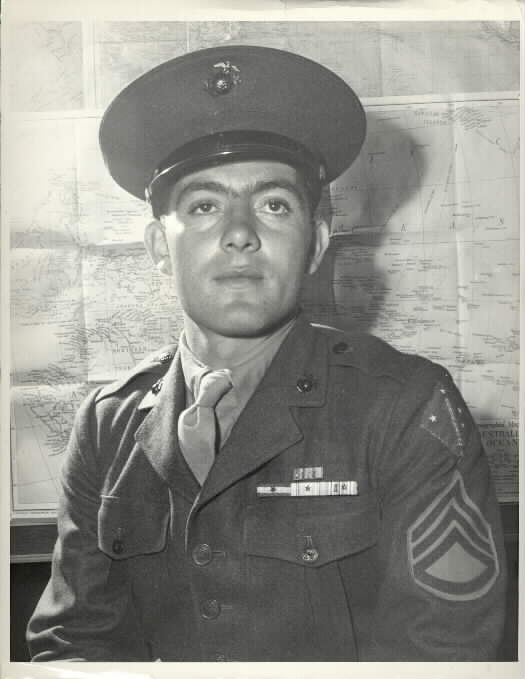
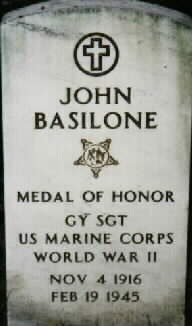
Michael Robert Patterson was born in Arlington and is the son of a former officer of the US Army. So it was no wonder that sooner or later his interests drew him to American history and especially to American military history. Many of his articles can be found on renowned portals like the New York Times, Washingtonpost or Wikipedia.
Reviewed by: Michael Howard

